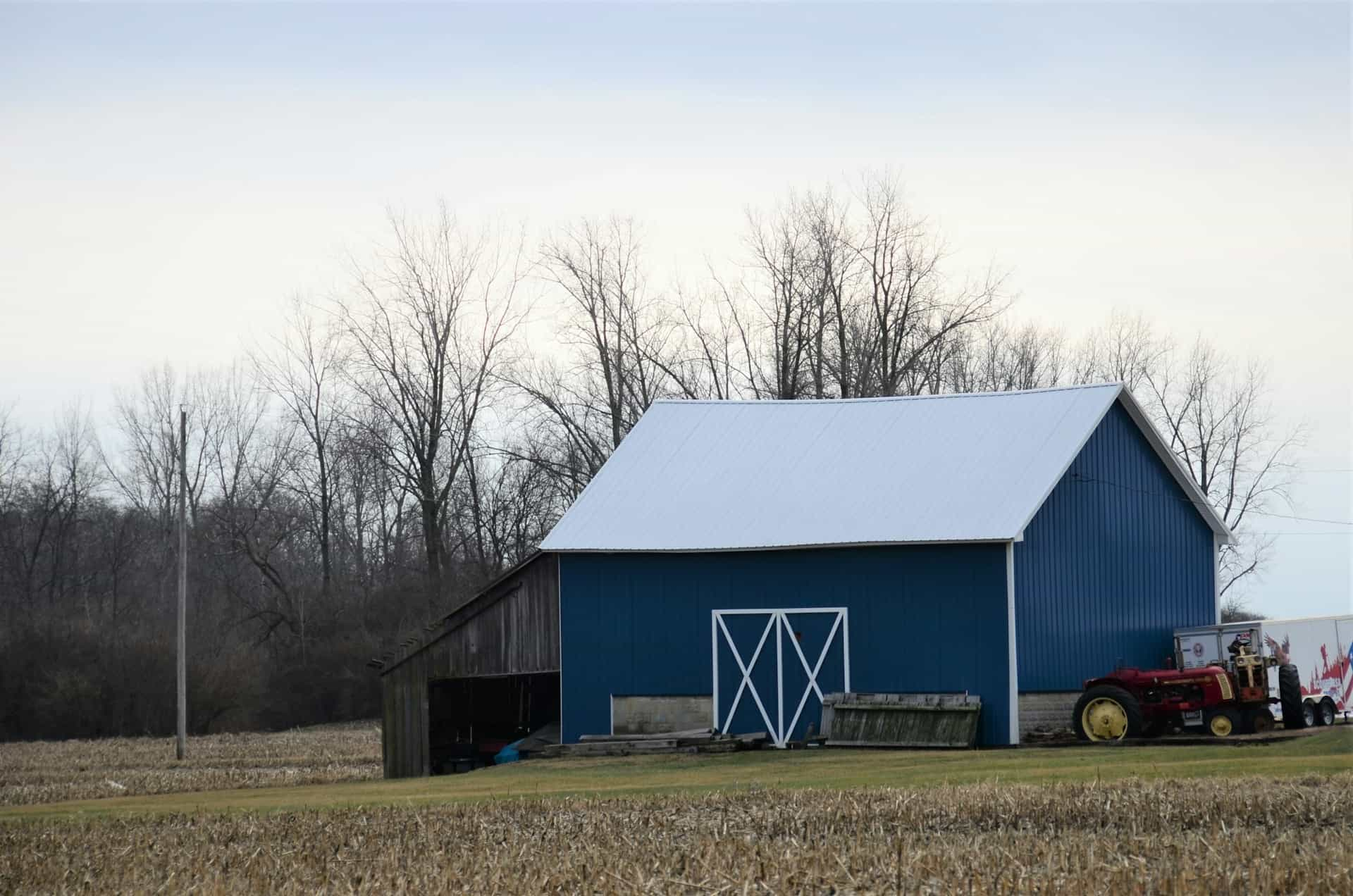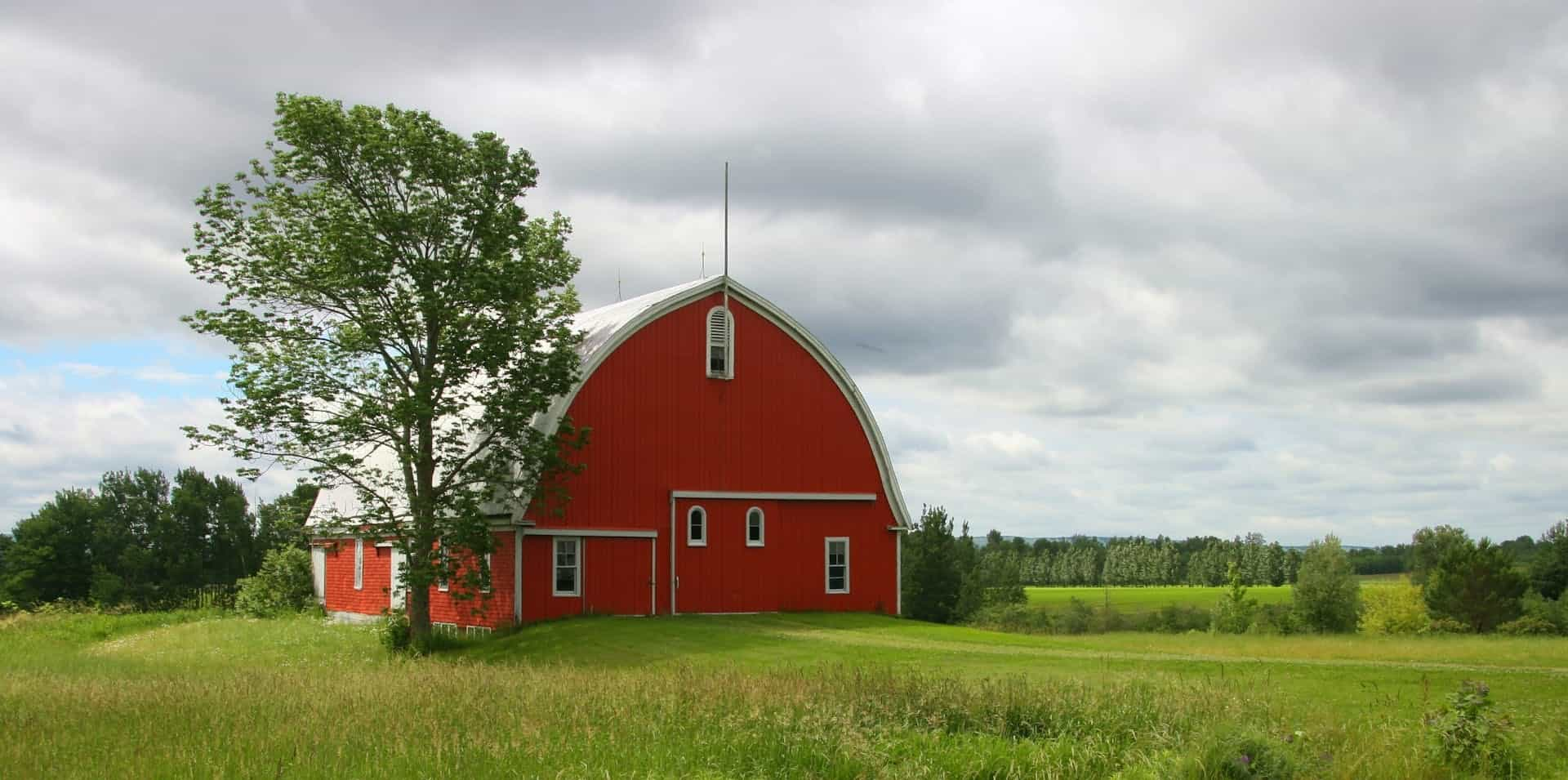Consider these 6 things before adding a pole barn to your property
A pole barn has long been a quintessential addition to rural properties, serving as a functional and versatile structure. It’s not merely a building; it’s an investment in your property’s potential. Before you raise the poles and set the trusses, there’s a lot to consider. Here’s a detailed guide for estate owners, DIY enthusiasts, and rural residents who are pondering whether to add this iconic structure to their slice of heaven.

1. Navigating zoning regulations
One of the first pieces in the pole barn puzzle is local zoning regulations. These legal jigsaw pieces can make or break your build. Zoning laws dictate what you can build, where you can build it, and sometimes even how it must be constructed. Understanding your local ordinances is non-negotiable—your pole barn’s fate hangs in the balance.
Research the specific regulations for your area. They’ll cover requirements such as property lines setbacks, maximum building heights and sizes, and sometimes even aesthetic criteria. Don’t be daunted; this information is usually available through your local government office or online.
If you’re facing particularly stringent or complex restrictions, consider consulting a local attorney or zoning expert specialising in land use. A small upfront expense could save you from costly renovations or even the scrapping of the entire project.
2. Purpose and design
Pole barns might seem straightforward, but the key to building one that truly meets your needs lies in purpose and design. Will it be a storage facility for farm equipment, a home workshop, or part of an animal husbandry operation? Each purpose will dictate a slightly different form.
Customisation is the hallmark of the modern pole barn. Tailor the dimensions, interior layout, and any added features such as insulation, ventilation, or lighting to your intended use. This personal touch ensures your pole barn meets and exceeds your expectations.
While function is paramount, don’t disregard the structure’s appearance. Integrating the pole barn’s design with the rest of your property can enhance its value and visual appeal. It’s about more than just abiding by local regulations—it’s about weaving a new thread into the fabric of your property.
3. The strategic advantage of a Pole Barn with a loft

Incorporating a loft into your pole barn’s design not only maximises the vertical space but also provides strategic benefits that enhance the building’s functionality and potential uses. A loft can serve as a dedicated area for secure storage, keeping ground-level space clear for daily activities or larger equipment. The added elevation is particularly advantageous for storing seasonal or infrequently used items, as it keeps them out of the way yet easily accessible when needed. Whether you decide to take a look at this link https://polebarnkits.org/pole-barn-with-loft/ or you are exploring other options, consider the added value of incorporating a loft into your pole barn’s design. A small investment upfront can reap significant rewards in terms of functionality and versatility for years to come.
From an economic perspective, a lofted space in a pole barn can increase the overall value of your property. It offers potential for additional uses such as office space, recreational area, or even additional living quarters, subject to local regulations and codes. This adaptability is a crucial aspect as it allows your pole barn to evolve with your changing needs without the necessity for extensive restructuring.
4. Budget and cost analysis
Before the hammer hits the nail, the pages of your ledger need pounding. Pole barns come with a range of costs, and underestimating can be a costly mistake.
Break down your budget not just into materials and labour but also into additional costs you might not initially consider—an extended warranty, for instance, can safeguard against future expenses. Remember, it’s not just about building; it’s about building smartly, thinking of the long-term investment.
Your skill level with construction is a vital piece of this financial puzzle. Going the do-it-yourself route can save a significant chunk of money, but it could also lead to pricier complications if done incorrectly. Weigh the pros and cons carefully.
5. Site preparation
No structure, pole barn or otherwise, is stronger than its foundation. Site preparation ensures your pole barn starts on solid ground, quite literally.
Start with a meticulous evaluation of the land. Look for level ground and natural drainage. Are there any trees or shrubs that need removing? The more you do now, the easier the construction phase will be.
Pole barns often use a simple pier foundation, but the specifics need to be right for your property. Soil type and climate will influence this decision. If in doubt, consult with a local civil engineer.
6. Maintenance and longevity
A pole barn is not a once-and-forget structure. Sensible maintenance can extend its life significantly.
Durability starts with the materials you select. Choose them wisely, ensuring they can withstand the elements, pests, and the occasional bump from heavy machinery.
Set a schedule for regular inspections. Look for signs of wear, water damage, or infestations. Catching these issues early can often turn a potentially major problem into a minor one.
Nevertheless, with every factor carefully considered—from zoning regulations to the robustness of your budget, and from the foundational site preparations to the specifics of maintenance—your quest to erect a pole barn stands on as firm ground as the structure itself. This guide has endeavored to steer you through the myriad decisions, blending practicality with ambition, and solidifying your understanding of what it takes to bring your pole barn vision to life. A well-planned pole barn is more than a mere shelter; it is a stalwart ally in your property’s ongoing narrative, serving your needs today while remaining adaptable for the unforeseen demands of tomorrow. With wisdom in your planning and precision in your execution, your pole barn will not only stand as a testament to your efforts but will also provide a tangible increase in your property’s value and utility.
![[AD] We’re a cricket-mad family, so we’re buzzing that @thehundred is back this August! 🏏🔥
To get ready, M tried out the official FREE Activity Pack — and it’s brilliant! 🙌
Packed with fun games, creative challenges and sporty tasks, it’s perfect for getting kids hyped whether you’re at home or on the go.
👉Download yours now (link in bio)
@londonspirit @ovalinvincibles #EveryMomentCounts #TheHundred
#EnglandCricket #CricketFamily #TheHundredCricket #LondonBloggers #Cricket #CricketIsLife #kidsfun](https://suburban-mum.com/wp-content/uploads/2022/11/505472555_18531279601016840_7092520074819907569_n-180x320.jpg)



![[AD - Press visit]
We enjoyed the glorious sunshine this weekend with a trip to Brighton. We went on the @brightoni360official which is right by the sea front.
The i360 pod take a slow journey up, allowing you to take in views across Brighton and the South Downs 450ft above ground. There’s a bar inside with drinks and snacks available to purchase and the experience lasts 25 minutes.
Afterwards, we headed to the open air roller rink for a roller skating session!
The roller rink is:
⭐ Suitable for over 5s
⭐ £6.50 if you have your own skates or £9.50 if you need to hire them
⭐ 45 minutes per session
Full details to visit the i360 + skating
📍 Brighton i360, Lower Kings Road, Brighton BN1 2LN
🚗 Parking nearby (we parked in the Regency Square Car park)
🎟️ Prices start from £25.40 for an adult and £16.90 for a child
🕐 Opening hours are currently Sun-Fri 10.30am-18.30pm and until 19.30pm on Saturdays
☕️ Bar inside the i360, cafe and gift shop
Book tickets here:
https://tickets.brightoni360.co.uk/tickets/?_ga=2.195305772.1869001490.1689671753-1757164059.1689671753/#events?eventid=157](https://suburban-mum.com/wp-content/uploads/2015/04/417980235_313576471048632_3682382982231216432_n.jpg)

![[AD] ***Summer of fun at Barracudas Activity Camps!****
There is plenty for kids to do at @barracudas_activity_day_camps
From Tennis, Archery, Swimming, Motor Sports and more you can be sure that there will be something for kids aged 4.5-14. ⚽🏈🥅🎾🏓🏎️🏹🏊♂️🏉
You can book on a day by day basis - so it can fit in with any other days out/activities you have planned and there are early drop off and late pickup options available. Barracudas are also Ofsted registered so you can use your Childcare Vouchers too.
⭐⭐⭐Get £20 off a week or £4 off a day using my discount code: MARIA20⭐⭐⭐
#BarracudasActivityDayCamp #BarracudasActivityCamp #BarracudaAmbassadors #SummerHolidays #SchoolHolidays #Summer2023 #SummerCamp #DayCare #Camp #KidsCamp #surreymummy #surreymums #SummerOfFun #ActivityCamps #HolidayCamps #Childcare #SchoolHolidays #schoolholidaycamps](https://suburban-mum.com/wp-content/uploads/2024/07/353583570_625625966167953_545896259645102575_n.jpg)



![[AD] We have some super exciting news...we have been chosen to be Laser Quest Ambassadors, and the boys are over the moon!
We are really lucky that our local Laser Quest (@laserquestkingston) is just around the corner from us. It means we can pop in of a weekend or anytime during the school holidays, and with summer just around the corner, I know Laser Quest will be one of our go-to places for some family fun.
As well as games of Laser Quest, there are also VR experiences and arcade amusements too. To find out a bit more about how Laser Quest works, you can read my blog post: https://www.suburban-mum.com/laser-quest-kingston/ (clickable link in bio)
Don't forget to keep an eye out for our Laser Quest posts - I'm going to be giving away two family passes to use at Laserquest Kingston!
If you can't wait and want to head down to Laser Quest to try it out, use the code SUMMER30 for 30% off your booking. The code is valid from now until the end of August 2023 and can be used on Laser Quest games and birthday party bookings.
#LaserquestAmbassador #Laserquest #LaserquestKingston #ActivitiesForKids #FamilyFun #DaysOutWithKids #Lasertag #LaserquestVR #Kingston #ThingsToDoInKingston #SurreyFamilyDaysOut #ThingsToDoWithKids #RainyDayFun #SurreyMummy #SurreyLife #LifeWithKids #LifeWithBoys #familyfunday](https://suburban-mum.com/wp-content/uploads/2015/04/353230107_797358078406942_2405522556733455165_n.jpg)

![[AD] The sun has finally made an appearance and the boys have been making the most of it by spending it
in the garden.
They’re go-to is always football and they’ve been trying to improve their aim and accuracy with the new Messi Foldable Footlball goal from the #MessiTrainingSystem range.
I love the fact the goal is foldable, making it easy to store away when not in use. It is also lightweight so you can effortlessly pack it up and take it to the park or to a friend’s house.
The Messi Foldable Football Goal retails at £36 and can be purchased from @argos
You can read my full review here: https://www.suburban-mum.com/messi-foldable-football-goal/
#TrainLikeMessi #FoldableFootballGoal #FootballSkills #OutdoorFun #LionelMessi #LeoMessi #FootballAtHome #OutdoorKids #JustGetOutside #OutdoorsAndFree #ScreenFreeKids #WhateverTheWeatherKids @flair_gp](https://suburban-mum.com/wp-content/uploads/2015/04/341194882_615024710178056_41977149395989448_n.jpg)

![[AD] We are absolutely thrilled to announce that we are Barracuda Ambassadors again this year.
With Easter just around the corner, the boys were sent the @barracudas_activity_day_camps new camp kit in preparation for the school holidays.
There’s a wide range of activities for kids aged 4.5 - 14 including Tennis, Archery, Basketball, Arts & Crafts and more.
If you like the sound of Barracudas, find out more over on their website. You can also save £20 a week or £4 a day, using my discount code: MARIA20](https://suburban-mum.com/wp-content/uploads/2024/07/336812306_765234558514317_685553691647241974_n.jpg)


![[AD - Gifted]
Last weekend we were invited to try out @tsarettaspice’s new Bottomless Brunch menu and I can tell you it was thumbs up all round!
There’s a good choice tapas on offer from Punjabi fish fingers, Indo Chinese Chicken to Spiced Lamb Scotch Eggs and Manchurian Cauliflower (which was amazing!)
If you’re local to Twickenham and fancy giving them a try here’s are the details.
Tsaretta Spice Bottomless Brunch
⭐️£37.50 per head for bottomless Prosecco or cocktail of the day
⭐️£55 per head for bottomless Champagne
⭐️ Food included: 4 tapas selections and dessert or 2 tapas selections, a pav or naanwich and dessert
⭐️ Non-alcohol brunch is also available
Tsaretta Spice
55 Church Street
Twickenham
TW1 3NR
You can also read our full review over on the blog (link in bio)](https://suburban-mum.com/wp-content/uploads/2024/07/334565436_5960402314015030_663031098700829518_n.jpg)
![[AD] What does family look like for you?
I am fortunate to be surrounded by strong, powerful women in the form of my mum, sister and mother-in-law (along with many others). With Mother’s Day just around the corner, @BootsUK want to celebrate all the different mums and mother figures we are lucky enough to have in our lives. They have a huge range of Mother’s Day gifts to choose from so we can show them how much they mean to us. (swipe to take a look at some of my choices)
If you want to express love and appreciation for the mother figure(s) in your life, head to Boots.com to find the ideal gift. They have a whole host of gifts, so you can be sure to find something to suit all tastes. Celebrate the #LoveForAllMums this Mother’s Day with Boots.
](https://suburban-mum.com/wp-content/uploads/2015/04/334276459_136658625736352_6403224988403337253_n.jpg)




